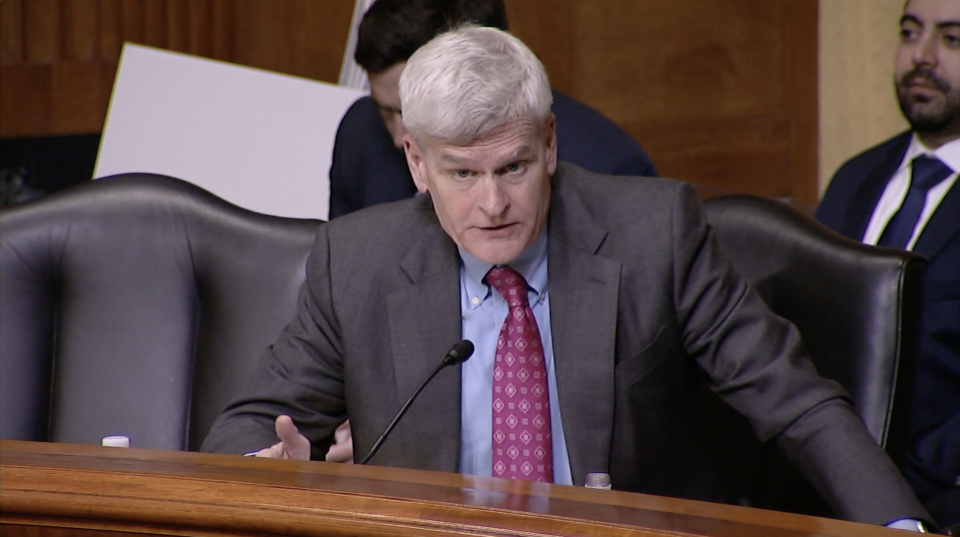
Whitney joins crowded 6th Dist. House race
June 5, 2014
Week after his graduation, teen’s family braces for funeral
June 5, 2014Louisiana students performed “as expected” on the iLEAP (Integrated Louisiana Educational Assessment Program) and LEAP tests this year, despite the Department of Education’s implementation of a more rigorous test to align with Common Core Standards.
Terrebonne Parish Superintendent Philip Martin said the parish saw modest improvement with its test scores this year.
Out of 1,289 eighth graders tested in Terrebonne Parish, 73 percent met the approaching basic or basic promotional standards to move on to ninth grade without any summer courses.
Terrebonne Parish tested 1,320 fourth graders, and 84 percent met the promotional standard to move on to fifth grade without any summer courses.
“If you take it collectively, we did fairly well,” Martin said. “The encouraging part of these scores is that this LEAP and iLEAP was a brand-new test never taken by kids before, all aligned with Common Core standards.”
In Lafourche Parish, 1,070 eighth graders took the LEAP test and 77 percent met the approaching basic or basic promotional standards to move on. The number of fourth grade students in Lafourche who passed was also at 84 percent out of the 1,032 students tested.
The state’s average percentage of students who passed on the first try is 74 percent in eighth grade and 82 percent in fourth grade.
Lafourche Parish Superintendent Jo Ann Matthews said the district’s teachers, students and parents should be commended for their continued improvement despite more rigorous testing.
“We usually exceed the state average most years,” Matthews said in a release. “The upward and downward trend in each grade level over the years is mostly a reflection of the differences in class composition. It is probable the same will hold true when those students are in the eighth grade.”
John White, state superintendent of education, said the result of this year’s test scores signify the movement toward new testing methods and better results in the future.
“The significance of these numbers is much more than what it says about the future than it says about a one-year change,” White said. “We are doing something new. We are transitioning toward raising the bar for 700,000 kids.”
Score standards established in 1999 required students to achieve basic on standardized test scores. As of this year, the state is moving its target score level from basic to mastery.
Louisiana adopted Common Core standards in 2010, and in 2013, the LEAP tests were adjusted to meet those standards, White said.
The curriculum and testing changes are part of a master plan to get more students ready to survive in a two- or four-year college environment.
“Twenty-eight percent of our adults have a two- or four-year college degree,” White said. “In order to keep up with job needs, that really needs to change to being more than half. This is about more people getting two-year and four-year college degrees.”
“We are going to gradually between now and 2025 expect that more students achieve mastery because mastery is the level at which kids succeed in two-year and four-year colleges,” he added.
Martin said it is a “hefty goal,” but he believes Terrebonne students and teachers can meet those expectations.
“Looking back 10 years, people would have never dreamed we would be where we are today, but to say we can attain that goal, I think we can,” Martin said, mentioning the need for additional resources and strategic instruction to do so.
“Our continued professional development efforts will only enhance our chances for continued improvement,” Matthews said.
This year’s iLEAP and LEAP tests were administered with more difficult curriculum in English, language arts and mathematics.
White said there was a slight downturn in English, language arts scores and a slight uptake in mathematics scores, but overall, “(students) performed as expected on this test.”
He said the texts for this year’s English portion of the test were more challenging, and students were required to answer an additional “long writing question,” which was graded for grammar. Students improved their performance on the analysis of nonfiction informational text such as news articles.
“Students demonstrated a better ability to find evidence in the text and to respond using evidence,” White said.
For the math portion, the questions were also more challenging when students had to demonstrate the logic behind their reasoning. White said students had difficulty explaining their logic and struggled when those concepts were applied in word problems.
“Teachers are going to have to continue to build student’s conceptual knowledge of issues such as proportionality and balancing equations,” he said. “Teachers are going to have to target their teaching to those individual skills where kids are deficient.”
By 2025, the average student at an “A rated school” will have to achieve a score of mastery or higher.
Today, 24 percent of the state’s student population scores at mastery. School districts closest to the mastery target such as Zachary at 47 percent and Orleans at 42 percent have tremendous work to meet the projected goals, White said.
This year’s results show 24 percent of students in Terrebonne Parish scored mastery or above, consistent with last year’s data.
In Lafourche Parish, 23 percent of students scored mastery or above, indicative of a 1 percent increase from last year.
“There is time to learn these new expectations in a way that does not humiliate educators, does not denigrate schools and does not punish students,” White said.
The questions administered to students on this year’s tests would be made available for review by the general public this summer. “This is a one time test. It is not meant to be repeated,” White said.









